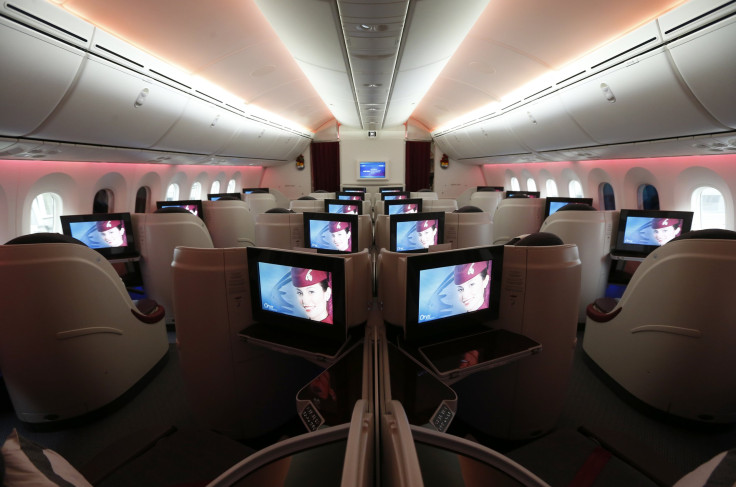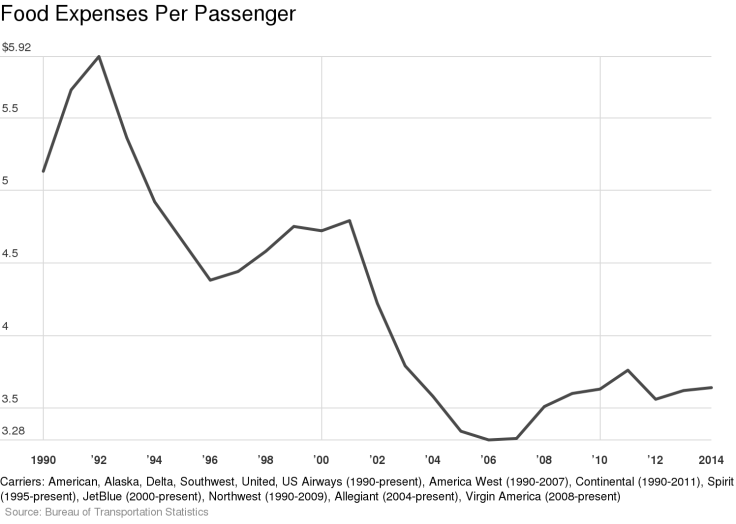The $1,000 Sundae In The Sky: The True Cost Of Business Class Perks

Say that you live in New York City and you have an important business meeting next Monday in Los Angeles. So, you quickly perform an Expedia search for round-trip tickets from JFK International Airport to Los Angeles International Airport for that day and find that business class fares class start at more than $4,000 for American Airlines, $3,300-plus for Delta and around $1,600 for JetBlue. Under the same constraints, JFK to London Heathrow easily sets you back $5,000 and all the way up to $7,000. But an economy class ticket at the last minute will cost you around $1,500 to $3,000 to Heathrow and around $700 to Los Angeles.
The huge difference in airfare gets you seats that recline to a flat bed, great entertainment options, premium food, free booze and separate boarding. You also get access to airport lounges, where you can read, work and snack, and can freshen up or even shower. And you'll get a lot more frequent-flier miles or points on your account. But is that an attractive value proposition, or do the perks amount in essence to getting an $1,000 ice cream sundae?
Airlines love business class travelers, since they make a huge profit from them.
"An airline will make between five to 10 times the profit flying a business class passenger than they will an economy class passenger on a long-haul route," Henry Harteveldt, a travel industry analyst and founder of the Atmosphere Research Group, said.
On the face of it, airlines spend lavishly to keep those customers happy. Just look at a sample premium-class menu from American Airlines for flights within North America and flights to Europe. For breakfast, you can expect a Gruyère and fontina cheese omelet or a sea-salted caramel waffle with chicken apple sausage. You could also add a fruit parfait. Lunch could be a spinach- and cheese-stuffed chicken breast with beurre blanc sauce. For dinner, why not have the smoked salmon and seared tuna, or a Gorgonzola-crusted beef filet with red wine and beer sauce? For dessert, you can have that ice cream sundae in a china cup on a linen-covered table with real silverware, not in a paper container with plastic utensils tossed by a surly flight attendant. Oh, and smiling crew members will offer you a choice of beers, wines and spirits. All drinks are complimentary in business class, something not seen for decades at the back of the plane.
"Where airlines place their emphasis, it is clearly business class," Bob Mann, airline industry analyst and founder of R.W. Mann & Company, said. Airlines have to give up a lot of space for business class sections, and there are a lot of extra costs, ranging from a higher number of cabin crew members per traveler to more closets and lavatories, that go into taking care of a business traveler. But that's money the airlines are willing to spend on travelers that reward them with huge profit margins.
The sample menu from American Airlines sounds great and better than anything ever offered in coach, but it doesn't set the airline back much. Just think about what you are getting for the price, and you'll realize how much an airline is making off business class.
A fancy omelet, even at a trendy brunch spot in New York City, may set you back around $15, $20 at the high end. You could get a steak that feeds four people at the famed Peter Luger Steak House in Brooklyn for $199.90. You can spend $208 for dinner at the three-Michelin-starred restaurant Jean Georges.

On a plane, that omelet and steak will cost comparatively thousands of dollars for a business class traveler, and they are warmed in a microwave. Cooking on airplanes is impossible for safety reasons, and even the fanciest food is boarded pre-cooked. Based on data collected by the Bureau of Transportation Statistics, airlines don't spend more than $4 per passenger on food across all classes.
Not including the fourth quarter, last year airlines in the U.S. spent $1.6 billion on food for 440 million passengers, according to the Bureau of Transportation Statistics. The bureau tracked American Airlines, Alaska Airlines, Delta, JetBlue, Southwest, United Airlines, US Airways, Spirit, Virgin America and Allegiant to produce an average food expense per passenger. The average expense was $3.64 per passenger, across all classes, which was 2 cents more than the average cost in 2013.

In 2014, American Airlines spent the most on food per passenger, averaging $6.44, followed by United ($6.10), Delta ($5.41) and Alaska ($4.16). Southwest had the cheapest expense at just $0.33 cents, but it doesn't serve warm food, only packaged snacks.
The most expensive item for airlines is the business class seat itself. In 2013, the New York Times profiled B/E Aerospace, a Florida-based company that provides electronic systems, lighting and seating to airplanes. It costs $40,000 to $100,000 to manufacture one business class chair, according to B/E Aerospace spokesman Greg Powell. Lufthansa spent more than $1 billion overhauling its seats over a five-year-plus period. Business class seats add plenty of weight compared with coach seats, which also increases the cost for airlines; heavier planes burn more fuel.
While airlines spend billions on seats, WiFi and entertainment, that's a one-time investment that gets recouped over countless flights.
In 2014, U.S. business travelers spent an estimated $292.2 billion, according to the Global Business Travel Association. That number is forecast to surpass $300 billion easily this year, as business travelers take an estimated 490.4 million trips. "Economy class is for transportation, and business class is about the experience," Harteveldt said.
If you aren't afraid of paying effectively 100 times more for your in-flight ice cream sundae than you would on the ground but still want to save some money flying business class, here are some tips.
© Copyright IBTimes 2024. All rights reserved.




















